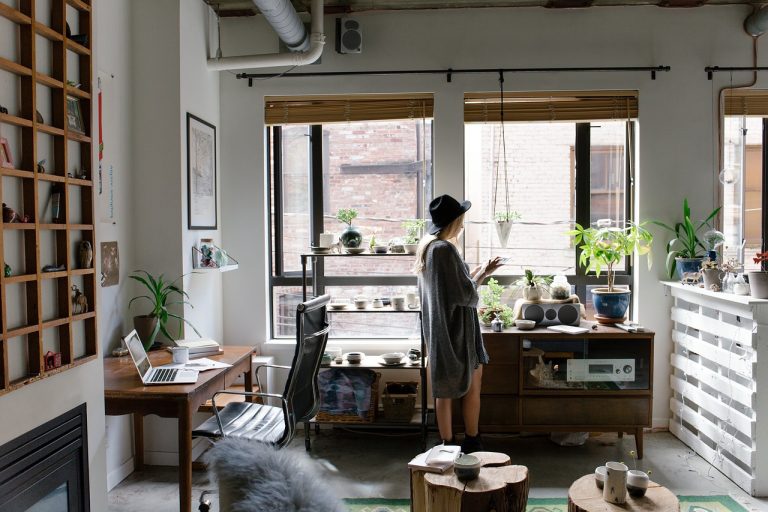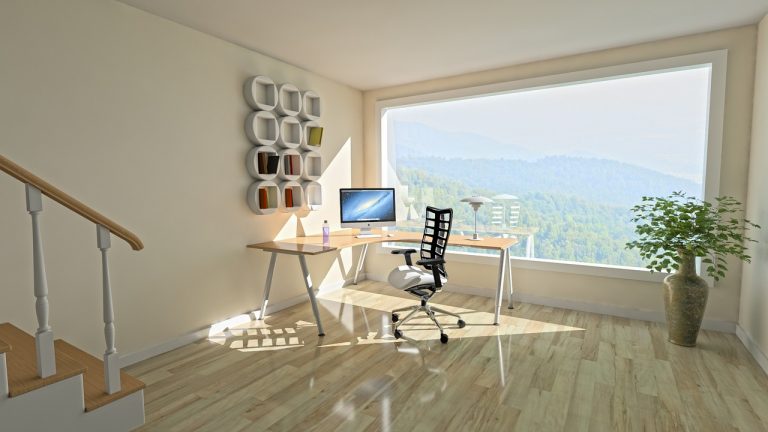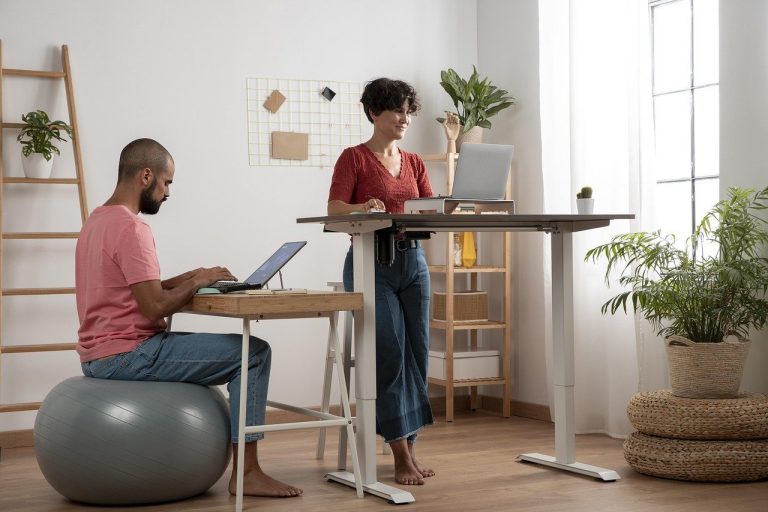How to Create a Focused Work Zone in an Open-Plan Apartment: Tips and Tricks
Creating a focused work zone in an open-plan apartment can be challenging, but it is essential for productivity. With no walls to separate different areas, it can be challenging to create a space that is conducive to work without distractions. However, with careful planning and design, it is possible to create a focused work zone that will help you get your work done efficiently.
The first step in creating a focused work zone in an open-plan apartment is to assess the available space. Look at the layout and determine which areas are best suited for work.
Consider the amount of natural light available, the proximity to other areas of the apartment, and the noise level.
Once you have identified the best area for work, it’s time to start designing your workspace.
Key Takeaways:
- Designing an open-plan layout that is conducive to work can be challenging, but it is possible with careful planning and design.
- Selecting furniture that defines spaces and decorative elements that complement the color scheme of the apartment can help create a focused work zone.
- Innovative lighting and visual techniques can be used to create a productive work environment in an open-plan apartment.
Designing Your Open-Plan Layout
When designing an open-plan layout, there are a few things to keep in mind. Understanding the open floor plan is essential to creating a functional space that meets your needs.
Additionally, zoning strategies can help you create distinct areas for different functions, which can help you stay focused and productive.
Understanding the Open Floor Plan
An open floor plan is a living space that combines multiple zones into one large area. This can include a living room, dining area, and kitchen. In a studio apartment, the bedroom may also be included in the open-plan layout.
The goal of an open floor plan is to create a spacious, communal living area that encourages interaction and conversation.
When designing an open floor plan, make sure to consider the overall space. The layout should be functional and practical, with each zone clearly defined.
This can be achieved through the use of furniture, rugs, and lighting. For example, a large area rug can help define the living area, while pendant lights can create a distinct dining zone.
Zoning Strategies for Distinct Functions
To create a focused work zone in an open-plan apartment, zoning strategies can be used to create distinct areas for different functions. This can include a designated workspace, a relaxation area, and a dining zone.
One effective zoning strategy is to use furniture to create distinct areas.
For example, a bookshelf or room divider can be used to create a separate workspace. A comfortable armchair or sofa can be used to create a relaxation area, while a dining table and chairs can create a distinct dining zone.
Another zoning strategy is to use lighting to create different moods and atmospheres.
For example, task lighting can be used to create a bright, focused work area, while ambient lighting can be used to create a relaxed, comfortable atmosphere in the relaxation area.
Selecting Furniture to Define Spaces
When creating a focused work zone in an open-plan apartment, selecting the right furniture is crucial. Furniture can be used to define spaces and create a sense of separation between different areas. Here are some tips for selecting furniture to define spaces:
Furniture Layout and Flow
The layout of furniture can have a significant impact on the flow and functionality of a space.
When selecting furniture for an open-plan apartment, make sure to consider the layout carefully.
One way to define spaces is to group furniture together based on their function. For example, a sofa and coffee table can be used to create a living room area, while a bench and shelves can be used to create a dining area.
It is also important to consider the flow of the space.
Furniture should be arranged in a way that allows for easy movement between different areas. For example, a couch should not be placed in a way that blocks access to other parts of the apartment.
Multifunctional Furniture for Versatility
Another way to define spaces in an open-plan apartment is to use multifunctional furniture.
This type of furniture can serve multiple purposes and is ideal for small spaces.
For example, an IKEA storage unit can be used as a room divider, creating a sense of separation between different areas. A desk can also be used as a dining table, allowing for a seamless transition between work and mealtimes.
Multifunctional furniture is also great for creating a sense of versatility in an open-plan apartment.
For example, a couch with a pull-out bed can be used as a guest bed when needed, while a coffee table with hidden storage can be used to store extra blankets and pillows.
Decorative Elements and Color Schemes
Creating a focused work zone in an open-plan apartment can be challenging. One way to delimit areas is by using decorative elements and color schemes. Here are some tips to help you create a harmonious and functional workspace.
Using Rugs and Accessories to Delimit Areas
Rugs are an excellent way to define different areas in an open-plan apartment. They can be used to anchor a seating area or a workspace and create a sense of separation.
When choosing a rug, make sure to consider the material, texture, and pattern. For example, a shaggy rug can add warmth and texture to a room, while a geometric pattern can create a modern and sophisticated look.
Accessories such as curtains, room dividers, and bookshelves can also be used to delimit areas.
Curtains can be used to create a temporary partition while bookshelves can be used to create a visual separation between a living area and a workspace. Room dividers can also be used to create a sense of privacy and separation.
Choosing a Harmonious Color Palette
Color is an essential element when it comes to creating a harmonious and focused work zone.
When choosing a color scheme, make sure to consider the overall style of the apartment and the mood you want to create.
Neutral colors such as beige, gray, and white can create a calm and serene environment, while bold colors such as red, blue, and green can create a more energetic and stimulating atmosphere.
It’s also important to choose colors that complement each other.
A monochromatic color scheme, for example, can create a cohesive and sophisticated look, while a complementary color scheme can create a more dynamic and vibrant atmosphere.
When choosing colors, make sure to also consider the lighting in the room. Natural light can enhance the colors in a room, while artificial light can sometimes alter the color perception.
Innovative Lighting and Visual Techniques
Creating a focused work zone in an open-plan apartment requires strategic use of lighting and visual techniques. By using these techniques, one can create separate zones and enhance the perception of space. Here are some innovative lighting and visual techniques to consider:
Strategic Lighting for Ambiance and Separation
Lighting is a critical element in creating a focused work zone in an open-plan apartment.
Pendant lights are a great option as they can be used to create a visual division between different areas.
For instance, pendant lights can be used to illuminate a specific area where one intends to work. Additionally, they can be used to create a sense of ambiance in the apartment.
Another way to use lighting is by installing glass walls or windows.
This allows natural light to flow into the apartment, creating a bright and airy atmosphere.
Natural light can also be used to separate zones by highlighting specific areas. For instance, a bright area can be used as a workspace while a dimly lit area can be used for relaxation.
Visual Tricks to Enhance Perception of Space
Visual tricks can be used to enhance the perception of space in an open-plan apartment.
One way to do this is by using furniture to create distinct zones.
For instance, a bookshelf can be used to separate a workspace from a living area. This creates a visual division between the two areas, making it easier to focus on work.
Another way to create distinct zones is by using rugs.
Rugs can be used to define specific areas, such as a workspace or a dining area. This creates a sense of separation between different zones, making it easier to focus on work.







